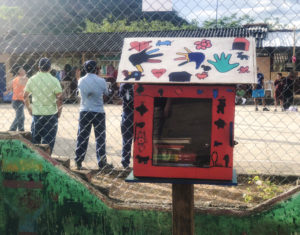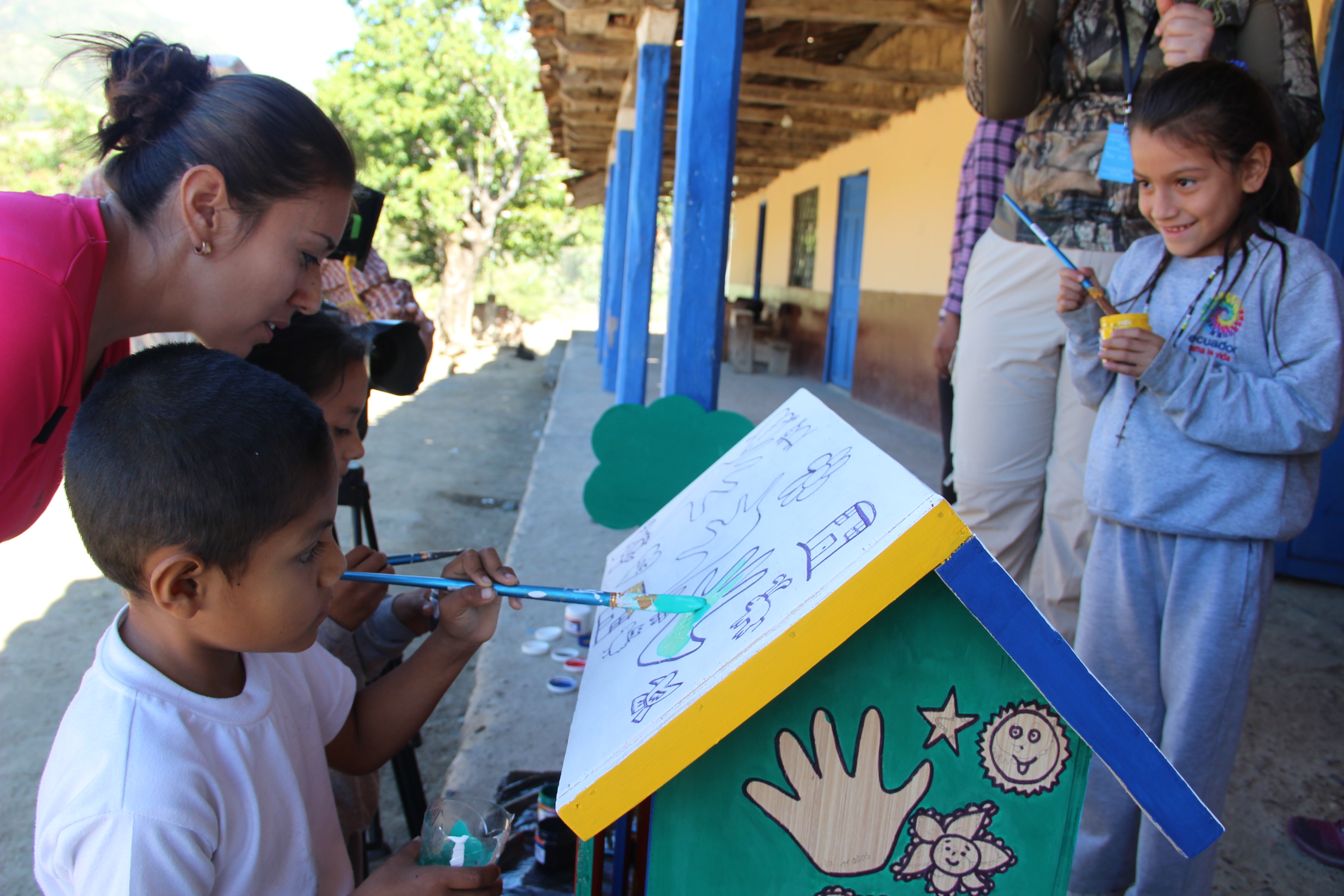One group decided on leaping animals and funny figures. The other dotted their handprints on the wooden surface. Regardless of the decorations, both groups of school children near Cariamanga, Ecuador gained the valuable insight reading brings through two programs designed to promote literacy.
These two projects were the Little Library project and the Healthy Minds for Healthy Living project.
The Little Library
For the first, students from Ohio University helped school children in Ecuador decorate little houses where books would be stored for them to read. The Little Libraries would be set up near their school so they could have easier access to new books and share them with other students in their communities.
Lori Lammert, director of operations for the Infectious and Tropical Disease Institute, said she thinks the project is an important aspect of the service learning part of the study abroad program.
“The Little Library project is designed to give students access to resources they might not have otherwise,” she said. “By being able to use and return books in the community, students will be able to practice early literacy skills.”
For example, in Chaquizhca, the older students drew designs on the Little Library and later the younger children colored them in. This way, the students got to be a part of making their Little Library unique and personal to their community.
Older students used their creative minds to draw animals, flowers, and symbols while younger students chose vibrant, primary colors to fill them in.
One of the younger students decided to color in the drawing of a tree purple.
After finishing the designs and coloring the Little Library, the boxes were installed near the schools so they could be filled with books,

Healthy Minds for Healthy Living
For the second reading based service project, books were given to the school children in rural communities so they could read them at home with their families.
The children are expected to read to their parents and then bring the books back in order to receive a new set. This way, reading can be done as a family and not just by the student during the school day.
Majo Carrasco, the project leader, said she has been working with the communities to make this project a reality.
To learn more about what she did for this project and how it works, watch the video below:

